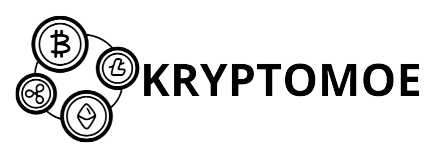Over 40% of people in decentralized finance now use token baskets that work like indexes. This way, they invest simpler in crypto. This change is big for how everyday investors get into this area.
I began with DeFi years back because I was over the hassle of constant spot trading. Even then, the tools powered by Ethereum for lending, tokenizing, and decentralized exchanges were in place. Places like Uniswap and Balancer. They let us make pooled products that are like normal index funds but without needing permission and can be put together in different ways.
This guide has my own tips from investing in DeFi index funds. I’ll show how to start without feeling lost. You’ll get clear steps, how these funds work, and how to pick the best ones for your aims.
Key Takeaways
- DeFi index funds offer diversified exposure to crypto sectors via tokenized baskets and protocol-built indices.
- They run on smart contracts—open, permissionless, and composable on platforms like Ethereum.
- Index-style products reduce the need for active trading but introduce smart contract and protocol risks.
- Researching protocol track record, fees, and rebalancing rules is essential for successful DeFi index fund investing.
- Knowing how to invest in Defi index funds starts with selecting a secure wallet, understanding gas costs, and choosing reputable fund builders.
What Are DeFi Index Funds?
I have been focusing on tokenized baskets for a long time. The easiest way to understand them is this: DeFi index funds combine several crypto tokens into one. This lets you gain broad exposure without having to buy each asset separately. These indexes work like ETFs in regular finance but exist on blockchain networks. They can be freely traded on platforms like Ethereum.
Definition and Overview
A DeFi index fund is like a smart contract or token. It lets you own a part of a selected group of crypto assets. Examples include Index Coop’s DeFi Pulse Index and Phuture’s products. These show that fund rules can be shared for everyone to see. This structure allows investors to spread their investments across many tokens easily.
These funds decide on which tokens to include based on certain rules. These could be rules about market size or what sector the token is in. Everything about the fund – what it holds, how it is governed, and when it balances – is written in code. This means anyone can see what’s inside, trade the index token, or even help make decisions about the fund if that’s allowed.
How They Work
Here’s how it goes: you first put up something valuable like ETH or a stablecoin into an index fund’s system. Then, the system creates an index token for you that represents a share of the basket. You can keep this token or trade it on decentralized exchanges. How minting and redemption happen depends on the provider, affecting costs and slippage.
Rebalancing is done on the blockchain following pre-set rules. Some funds adjust their holdings regularly; others do it when the mix of assets changes beyond certain points. Liquidity pools and automatic market makers like Balancer and Set Protocol often support these trades and adjustments. I pay close attention to these mechanisms. They immediately show the cost of transactions: fees, price changes, and risks involved in the contracts.
When you’re starting with DeFi index funds, first look at how often they rebalance. Also, check what technology they use. This can help you understand the costs and risks of trading. To pick the best DeFi index fund, compare what’s in each fund, check for safety audits, and see where you can trade their tokens. These are more important than how the price might move in the short term.
Benefits of Investing in DeFi Index Funds
DeFi has evolved from small tests to a field rich with financial tools. Investing in a DeFi index fund groups many protocols into one. This approach makes checking projects easier while you stay in tune with the sector’s growth.
Diversification
The DeFi Pulse Index pools top tokens, so you’re not betting on just one. It spreads your risk across various projects and sectors. This includes lending, AMMs, and Layer 2 solutions.
This setup is akin to an ETF in the stock market. You enjoy wide-ranging exposure, a systematic selection, and reduced risk from a single token’s moves. For many, this strikes a balance between active day trading and simply holding a few cryptocurrencies.
Accessibility
If you have an online wallet, accessing DeFi index funds anytime is possible. These platforms cut out middlemen, letting everyday people invest without needing a broker.
Some entry points may ask for KYC, yet the heart of DeFi promises easier entry and lesser costs. It brings complex investment themes within reach of individuals without big bank access.
Potential for High Returns
DeFi yields come from staking and offering liquidity, atop the protocol tokens’ potential price growth. An index fund lets you benefit from several successes in one go.
Picking top DeFi index funds is about weighing gains against risks. I’ve noticed they can outdo simple Bitcoin or Ethereum investments during boom times. Yet, they might fall harder when the market dips.
| Benefit | What it means | Investor takeaway |
|---|---|---|
| Diversification | Indexes group top DeFi projects and sector plays | Reduces single-token risk; useful for long-term core exposure |
| Accessibility | Buy with a wallet; platforms operate around the clock | Low entry cost; ideal for DIY investors and builders |
| Yield and Upside | Staking, LP rewards, and token appreciation across the basket | Can deliver higher returns than single-asset holds but expect volatility |
| Rules-based Exposure | Selection and weighting follow transparent criteria | Makes Defi index fund investing easier to monitor and rebalance |
| Theme Access | Sector indexes (Metaverse, Layer 2) capture niche growth | Useful for tactical allocation and thematic bets |
When diving into DeFi index funds, start modestly. Choose funds with a transparent strategy. Follow their performance and fees closely. With time, you’ll find the funds that suit your risk tolerance and objectives best.
Key Statistics on DeFi Index Funds
I monitor a few dashboards for on-chain data. These dashboards show the growth of tokenized index products. They went from small experiments in 2018 to a significant part of the market now. By looking at assets under management, how liquid they are, and recent returns, we can better understand their risk. This method is more reliable than just following news headlines.
Market Growth Trends
Since 2018, initiatives like Index Coop and PieDAO have introduced tokenized baskets. These baskets reflect different sectors of the crypto world. Thanks to tools from Balancer, Set Protocol, and Enzyme, we now have over 500 funds. Of these, roughly 30 professionally managed funds hold most of the capital. Their market caps are in the high hundreds of millions, according to some reports.
My dashboards focus on two main areas: the growth in assets under management and where liquidity is concentrated. Most of the money is in a few funds. Meanwhile, many smaller funds struggle with less money and wider prices. For those looking into decentralized finance index funds, this imbalance is crucial. It’s even more important than how fast they’re growing.
Performance Metrics
Before investing, I consider several key metrics: the amount of managed assets, returns over different periods, yearly volatility, how liquid they are on DEXs, and costs from swaps and rebalances. These factors quickly show a fund’s condition.
Consider the DeFi Pulse Index as an example. It often mirrors the larger moves of major DeFi tokens. This means big wins in good times but bigger losses when markets fall. By comparing DPI to ETH, BTC, and broad ETFs over some years, we get a clearer view of its performance.
| Metric | What I Track | Why It Matters |
|---|---|---|
| AUM | Total locked value in fund | Size signals market trust and reduces risk of large slippage |
| Returns (30/90/365) | Short and medium-term performance | Shows responsiveness to market cycles and momentum |
| Annualized Volatility | Std. deviation of returns | Quantifies downside risk for leveraged exposure |
| Liquidity / DEX Depth | Pool sizes and order book equivalents | Determines slippage on entry and exit |
| Fee Drag | Swap, rebalancing, and protocol fees | Reduces net returns over time |
In reviewing DeFi index fund strategies, I prioritize liquidity. Funds with low DEX depth can wipe out gains due to slippage. Hence, comparing the costs and rebalance schedules of different funds is vital.
For those exploring the top DeFi index fund options, rely on concrete data over promotional words. Look up real-time AUM and past returns from on-chain sources like Dune, CoinGecko, and DeFi Pulse. These figures help forecast possible outcomes and shape a strategy that matches your risk level.
Risks Associated with DeFi Index Funds
I’ve seen the bright side of decentralized finance and the downside when markets fall. It’s wise to know the risks before putting in your money. This way, you can decide what’s best for your risk level and DeFi index fund strategy.
Market Volatility
Crypto markets can change quickly. Tokens in DeFi index funds often follow the trends of big players like Bitcoin and Ether. So, the value and expected gains can fall abruptly.
There can be more risk when liquidity providers lose out or when a lot of collateral is needed. That’s why I’m careful with how much I invest here.
Smart Contract Vulnerabilities
Smart contracts are what make tokenized index funds work. But glitches or attacks can lead to sudden losses. In the past, indexed Finance and others have been hit, causing big losses for investors.
Having audits helps, but they’re not foolproof. I look for funds that have been audited many times, have bug bounties, and update openly.
Operational and Custody Risks
DeFi does away with traditional banking. This means there’s no safety net if you lose special access codes. There’s no way to get back lost access like with banks.
For my important investments, I use secure storage methods. Even small errors in handling your wallet or transactions can lead to a permanent loss.
Liquidity, Slippage and Token Quality
Some funds may include tokens that are hard to sell quickly. Trying to rebalance during tough times can cause extra losses. The risk goes up if the fund includes risky or low-grade tokens.
I always look at how easily tokens can be traded and pick funds that show they have plenty of available trading options before investing.
Regulatory Concerns
The government is keeping a close eye on crypto products. DeFi index funds might face new rules or legal challenges that could change how they’re traded or listed.
To protect my investment, I also put some into officially regulated options like Bitcoin futures ETFs. Plus, I keep good records for taxes and following rules.
Practical Steps I Use
- Size positions so a single event won’t derail my portfolio.
- Prefer funds with audited contracts and strong on-chain liquidity.
- Use hardware wallets and multi-sig for custody when possible.
- Blend exposure between decentralized finance index funds and regulated products.
- Monitor rebalances, fee structures, and token constituents regularly.
How to Choose the Right DeFi Index Fund
I pick funds like I shop for tools: with a focus on practicality, reliability, and clear guides. To choose a DeFi index fund, start by doing your homework. Learn how to invest in DeFi index funds by looking into who manages the index, the process for selecting tokens, and if there are audits available to the public.
Researching Available Options
Begin with well-known index providers such as Index Coop, PieDAO, Cryptex, and Phuture. Examine their token selection rules and how they weigh different tokens. Make sure they have had recent checks by firms like CertiK or Quantstamp, and look for any problems not yet fixed.
It’s important to analyze on-chain data. Check the fund’s size and how easily you can buy or sell without big price changes. Make sure if the fund creates and redeems tokens directly on the blockchain, or uses other methods like wrapped tokens.
Evaluating Fund Performance
Look at how the fund has done in the past compared to benchmarks like ETH and BTC. Focus on how much the value goes up and down, not just the gains it reports. See if the fund matches up well with the assets it aims to represent.
Find out the real costs of entering or leaving a trade by looking at price differences. I do trial runs of a trade to gauge the impact of slippage and transaction fees before I invest.
Understanding Fees and Expenses
Remember to factor in protocol fees, exchange fees, and the cost of transactions for buying or selling. Constant adjustments within the fund can increase costs, especially in funds that change their holdings a lot. Some funds also add fees for managing your investments on top of other charges.
Evaluating the total cost is key, whether buying tokens directly or considering other options. On my checklist, I include confirming fund size and ease of trading, understanding the investment process, calculating trade costs, and assessing the risks related to control and safety.
I prefer funds that are open about their methods, have solid trading volumes, pass regular checks, and aim to spread risks. These points steer my approach to selecting DeFi index funds, guiding me towards the best options for a self-managed portfolio.
Tools for Investing in DeFi Index Funds
I have a simple set of tools that guide me in every DeFi trade and review. The right mix of platforms for comparing and dashboards for my portfolio made it easier to see risks and pricing issues. Here, I’ll talk about the tools I use and how they help with managing DeFi index funds and picking the best ones.
Comparison Platforms
To start, I check CoinGecko or CoinMarketCap for a list of index tokens and their key metrics. DeFi Pulse is great for seeing the total value locked in at a glance. And for deeper financial insights, I turn to Token Terminal.
Dune Analytics and Nansen are key for custom analysis on fund movements and who owns what. Before putting in any money, I quickly check Dune for recent money coming in. These tools are critical for checking out the best DeFi index funds.
Portfolio Management Tools
Zapper and Zerion bring together all my investments across different wallets and blockchains. They show my profit and loss over time, my investment spread, and how much I spend on transaction fees. DeBank offers a broad view across multiple blockchains. Argent provides a neat way to hold and interact with my assets.
If I’m planning to swap, I use 1inch and Matcha to figure out my possible losses in value, then go through with it using Index Coop or Balancer if it makes sense. This method has cut down what I pay for trades and made managing my DeFi index fund portfolio easier.
Security and Audit Checks
Checking contracts on Etherscan is a must for me before buying anything. I make sure to read audit reports from CertiK, Quantstamp, and OpenZeppelin. If a fund doesn’t have recent checks or audits, I pause. Then, I look closer at the money involved with Dune or Nansen.
Practical Workflow I Use
1. Compare fund parts on CoinGecko and Token Terminal.
2. Make sure contracts are real on Etherscan and check CertiK audits.
3. Use 1inch to plan swaps for the best terms and loss estimates.
4. Use protocol interfaces like Index Coop or Set Protocol when it’s the smart move.
5. Keep an eye on my investments with Zapper or Zerion for good DeFi index fund management.
| Tool Type | Example Tools | Primary Use | Why I Use It |
|---|---|---|---|
| Comparison Platforms | CoinGecko, CoinMarketCap, DeFi Pulse | Find index tokens, view TVL and basic metrics | Quick discovery of top Defi index fund options and snapshot metrics |
| Analytics Dashboards | Dune Analytics, Nansen, Token Terminal | Custom queries, fund flows, on-chain financial metrics | Deep-dive into liquidity patterns and holder concentration |
| Execution Aggregators | 1inch, Matcha, Uniswap, SushiSwap | Find best on-chain prices, route swaps | Lower slippage, better fills when buying index tokens |
| Protocol UIs | Index Coop, Set Protocol, PieDAO, Balancer, Enzyme | Native buying and index management interfaces | Direct interaction with fund mechanics and rebalance features |
| Portfolio Managers | Zapper, Zerion, DeBank, Argent | Aggregation, performance tracking, wallet management | Simplifies ongoing Defi index fund portfolio management and reporting |
| Security & Audits | Etherscan, CertiK, Quantstamp, OpenZeppelin | Contract verification, audit reports | Validate safety before committing funds |
Predictions for the Future of DeFi Index Funds
I’ve been watching the space of tokenized funds and open-source tools for years. What began with a few experiments has now expanded. We see hundreds of thematic indexes launching in just a few months. This rapid growth suggests DeFi index funds will continue to evolve quickly. They’re propelled by creators on platforms like Ethereum, Polygon, Arbitrum, and Solana.
We can look forward to lower operational costs and smoother ways for users to interact. Thanks to gas optimization and the introduction of Layer 2 solutions, it’s getting easier for everyday people to get involved. Security enhancements by custody providers and standardized auditing practices will also attract more institutional investors.
Here, I’ll share likely trends in the market and innovative changes on the radar. These insights should be useful for both investors and developers.
Expected Market Trends
With fees becoming more affordable and interfaces getting better, more people will invest in retail. There will likely be a clear division. We’ll see indexes that are high in liquidity and low in volatility on one side. On the other, there will be experimental funds. These might focus on the metaverse, Layer 2 technologies, privacy features, or staking yields.
Regulatory bodies will start paying more attention to this space. Some DeFi products might even undergo a structured approval process. This would be similar to what Bitcoin futures ETFs went through. Such scrutiny could prompt teams to develop hybrid products. These would blend on-chain strategies with regulated offerings.
Standards for institutional custody and auditing are set to improve. This change will make decentralized finance index funds more appealing to cautious investors. With legal conditions getting clearer over the next few years, we should expect broader adoption.
Innovations on the Horizon
Automation on the blockchain will be crucial. Features like dynamic weighting, risk-adjusted baskets, and automatic rebalancing should become common. This will allow for more complex DeFi index fund strategies that don’t need constant human monitoring.
Indexes backed by synthetics and derivatives will connect with traditional markets. Investors will be able to hold a single token that represents assets from various blockchains. We might also see Tokenized ETFs that link centralized finance (CeFi) with decentralized finance (DeFi).
Expect better standardization of tools, methodology, and governance. Improved frameworks for building indexes, transparent rules on weighting, and clear governance structures will ease the process for everyone involved. This uniformity will enhance trust. It will also make future performance of DeFi index funds simpler to predict.
- Proliferation of thematic indexes: quick creation of indexes focusing on Layer 2, the metaverse, privacy, and staking yields.
- Operational efficiency: reduced gas prices and second-layer solutions improve access for regular folks.
- Institutional bridge: better custody services, audits, and regulated products attract new investment.
- Advanced strategies: the use of dynamic, synthetic, and cross-chain approaches increases the variety of products available.
My perspective is grounded yet optimistic: DeFi will surpass traditional finance in innovation, especially in product design. Achieving growth beyond a small user base requires legal transparency and more rigorous audits. This blend of factors will guide the development of the next generation of DeFi index funds. It will also influence the strategies teams decide to pursue.
FAQs About DeFi Index Funds
I’ve put together a short FAQ because many readers have similar questions about DeFi index funds. My answers come from direct experience. They blend on-chain details with personal investment tips.
What is the minimum investment?
There’s usually no formal minimum investment for on-chain, tokenized index funds. However, transaction costs can effectively set a minimum. For example, when I bought an index token on Ethereum, gas fees and slippage made the actual cost much higher than expected.
Small buys under $50 often don’t make sense on busy blockchains. But, some platforms let you start with as little as $1. Decentralized exchanges may allow $10 trades. Yet, gas fees and liquidity issues might reduce your profits.
How are returns generated?
Returns from DeFi index funds come from several sources. First is the rise in value of the tokens in the fund. Next, you can earn from staking rewards, lending interest, or liquidity incentives. Also, token rewards or perks for token holders can boost returns.
Remember, returns will be after fees, swap costs, and any losses from liquidity pool positions. It’s important to check the fund’s approach. Some funds actively earn from protocols, while others just track token prices.
As for investing advice, here’s what I usually do:
- Estimate transaction costs beforehand. Check for gas fees and slippage on platforms like Uniswap.
- Look into the fund’s whitepaper for details on how it makes money and its fees.
- Use cautious estimates to figure out your real returns after costs.
Evidence and Case Studies
I explored on-chain data, fund information, and my trades to understand tokenized index funds better. I wanted to see real proof for Defi index fund investing. My goal was to identify which products did well under pressure and which didn’t.
I’ll share a few practical examples and a brief performance comparison of Defi versus traditional investments. This will help you evaluate risk and return. I looked into DeFi Pulse Index (DPI), Index Coop tokens, and a Balancer small-cap thematic pool from 2021.
Successful DeFi index fund examples
The DPI from DeFi Pulse and the suites by Index Coop stood out. They were transparent, had on-chain liquidity, and were rebalanced regularly. This made them among the top Defi index funds in my view.
During a surge, I observed a Balancer-based small-cap metaverse index. Depth of liquidity was critical. When trading volumes jumped, slippage increased for smaller tokens. This was a tough lesson but meaningful. Strong audits and deep liquidity pools helped reduce trade costs.
Performance compared to traditional investments
I compared the performance of Defi and traditional investments by simulating a $10,000 investment in three assets over 3-year periods: DPI, an S&P 500 ETF, and BTC. DPI had higher highs during bull markets but also deeper lows during downturns.
The biggest difference was in volatility. DPI’s volatility compared to the S&P 500 was significant. This explains why DPI can outperform stocks in good times but fall behind during crashes. Fees, trading costs, and liquidity all significantly affected the final gains.
| Fund / Asset | Primary Underlying | 3-Year Net Return (example) | Annualized Volatility | Notes |
|---|---|---|---|---|
| DeFi Pulse Index (DPI) | Top DeFi tokens (tokenized basket) | +150% (net of typical fees, illustrative) | 85% | High beta, strong during DeFi rallies, needs deep liquidity for large trades |
| S&P 500 ETF (example) | US large-cap equities | +40% (net, illustrative) | 18% | Lower volatility, broad diversification, less crypto exposure |
| Balancer small-cap thematic index | Low-cap metaverse & Layer 2 tokens | +220% pre-slippage; +120% realized | 110% | High returns when liquid; subject to slippage and impermanent loss |
| Index Coop tokenized fund | Thematic crypto baskets | +95% | 70% | Transparent governance and on-chain tracking, professional tooling |
For my case studies, I used Dune dashboards, CoinGecko’s price history, and Index Coop’s performance reports. This helped confirm the size, makeup, and returns of these funds. It’s strong proof supporting Defi index fund investing.
In my findings, the best Defi index funds shared three things: straightforward methodology, thorough audits, and plenty of liquidity. The ones that didn’t do well often missed one of these. They faced risks like slippage, hacks, or scams.
Conclusion: Getting Started with DeFi Index Funds
Let’s dive straight in. Begin by understanding basics like smart contracts, wallets, and lending. This knowledge is key. It makes your investment choices in DeFi index funds clearer. Plus, it helps avoid mistakes that can cost a lot.
Steps to Begin Investing
First, decide how to hold your funds: use a hardware wallet or a service that holds them for you. It’s crucial to keep your private keys safe. Losing them means you can’t get your assets back. Then, look into index funds from places like Index Coop and Phuture. Make sure to read their strategies and check if they’re properly audited. This helps ensure your investment is secure.
Before you invest, use tools like 1inch to figure out fees and potential price changes. Make trades through a DEX or directly on the fund’s site. Think about investing a set amount regularly. And, be smart about gas fees to keep costs down. Once you’ve invested, stay on top of your investment’s performance. Use tools like Dune for this. Keeping an eye on things helps manage your portfolio wisely.
Final Considerations for Investors
Keeping risks low is important. Don’t put too much into one thing, choose funds that have been checked by experts, and diversify. Watch out for all the different fees. They can really eat into your money, especially if you’re making small trades. Since DeFi is always changing, stay in the loop by following updates from developers and using analytics.
Starting with smaller amounts and following a clear plan saved me from big losses. Being cautious and knowing the common mistakes to avoid can help a lot. Check out this guide for tips. When investing in DeFi index funds, treat it seriously. Do your research, understand how it works, and plan for the long term.








